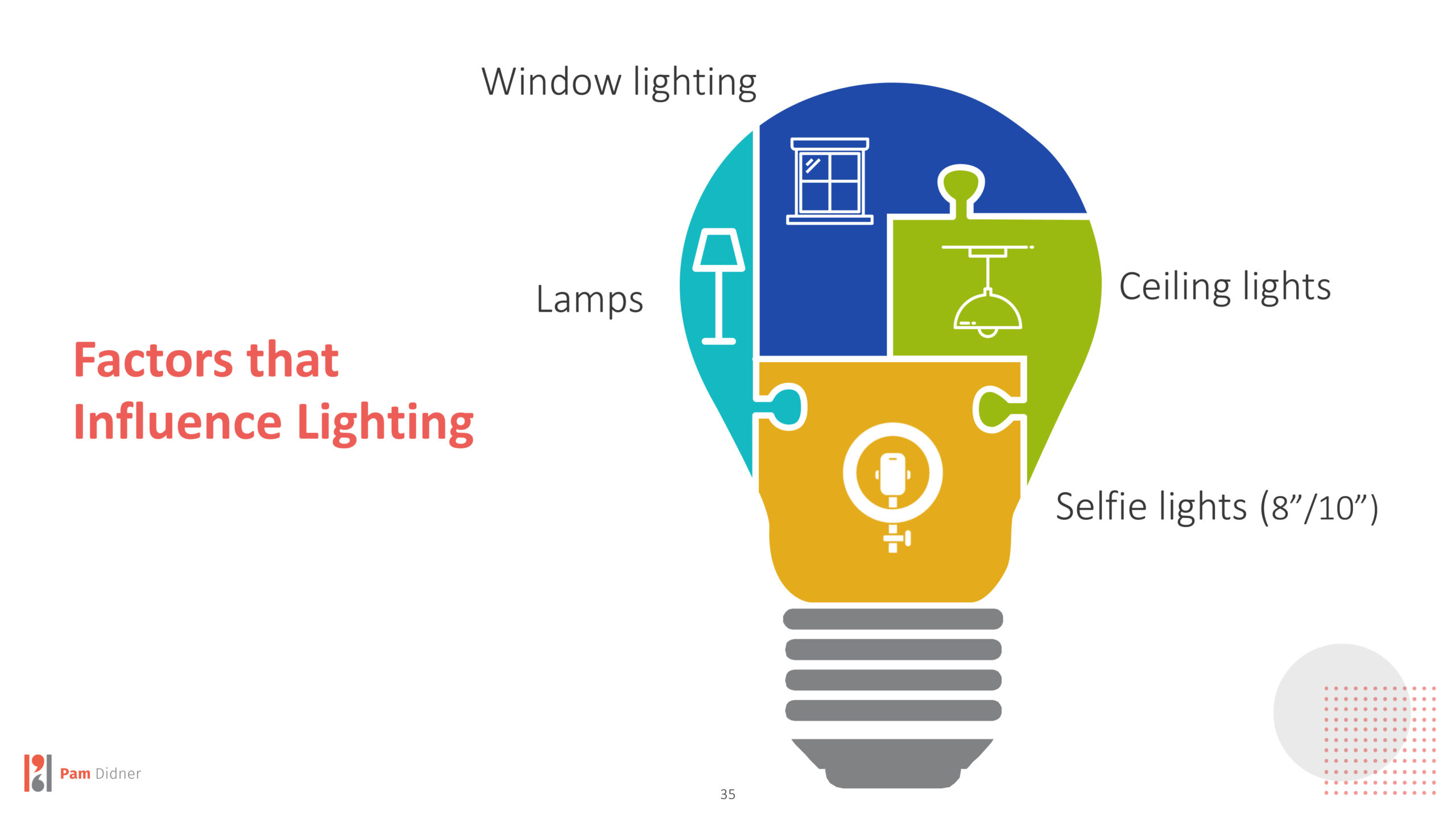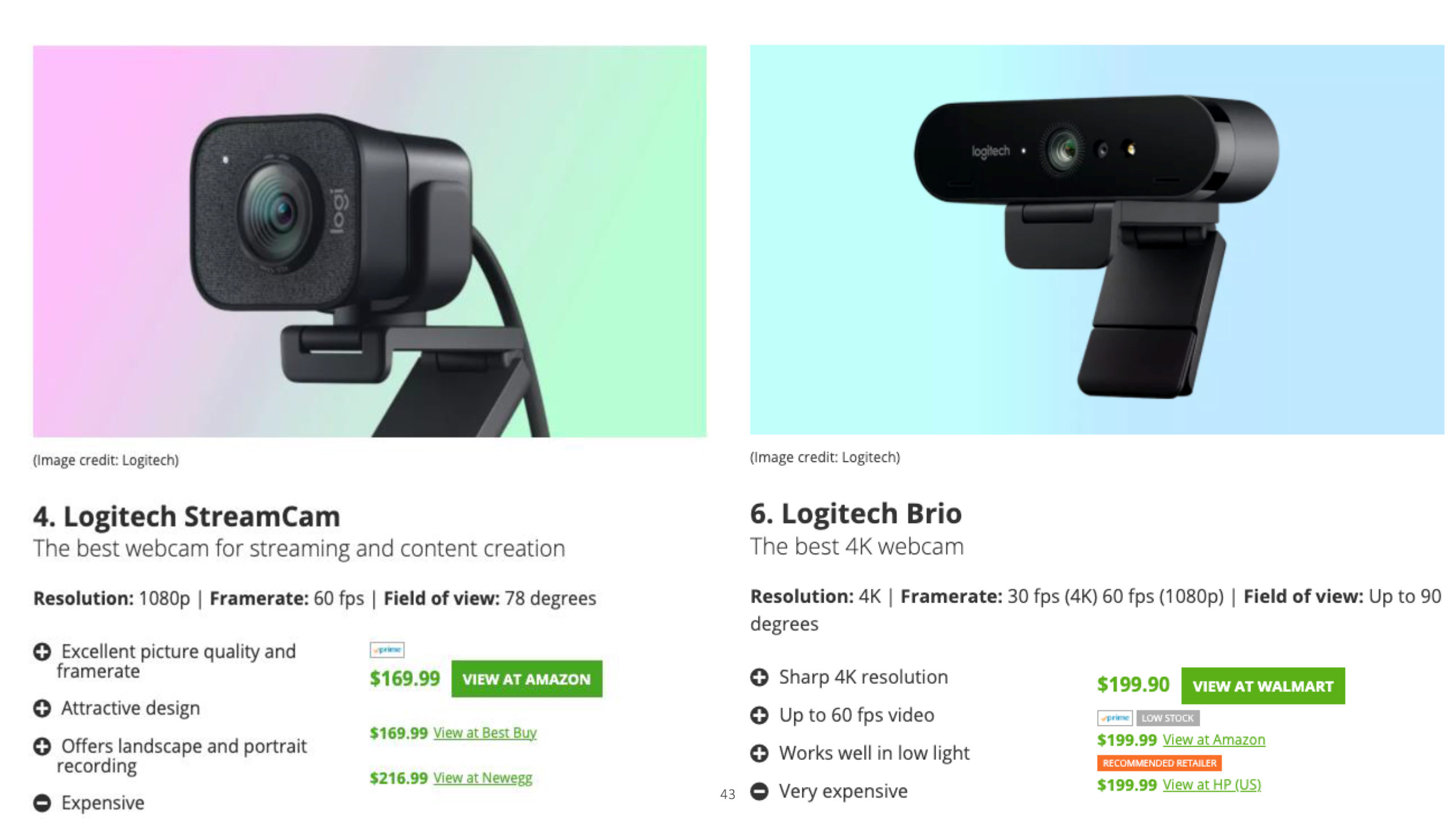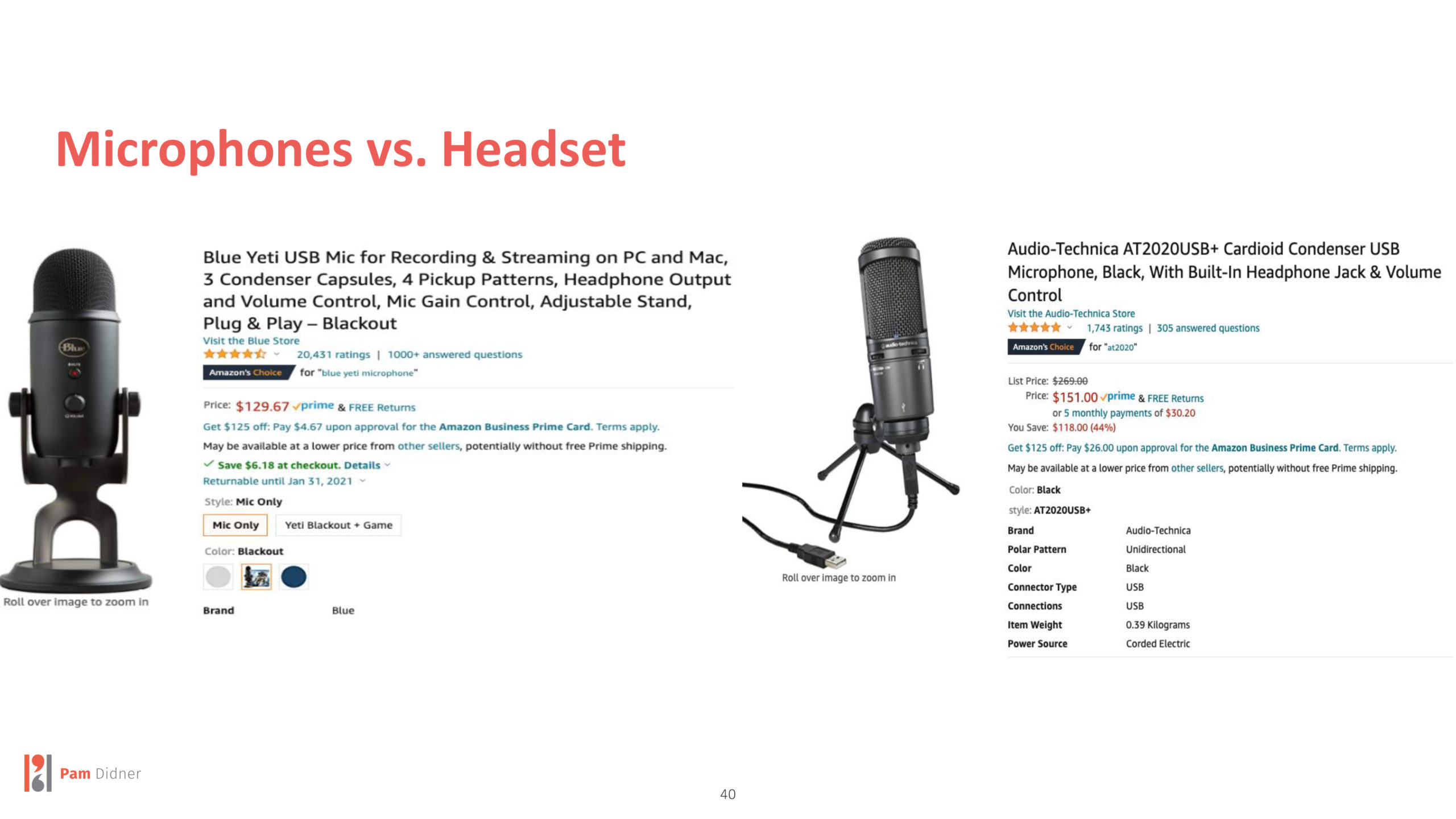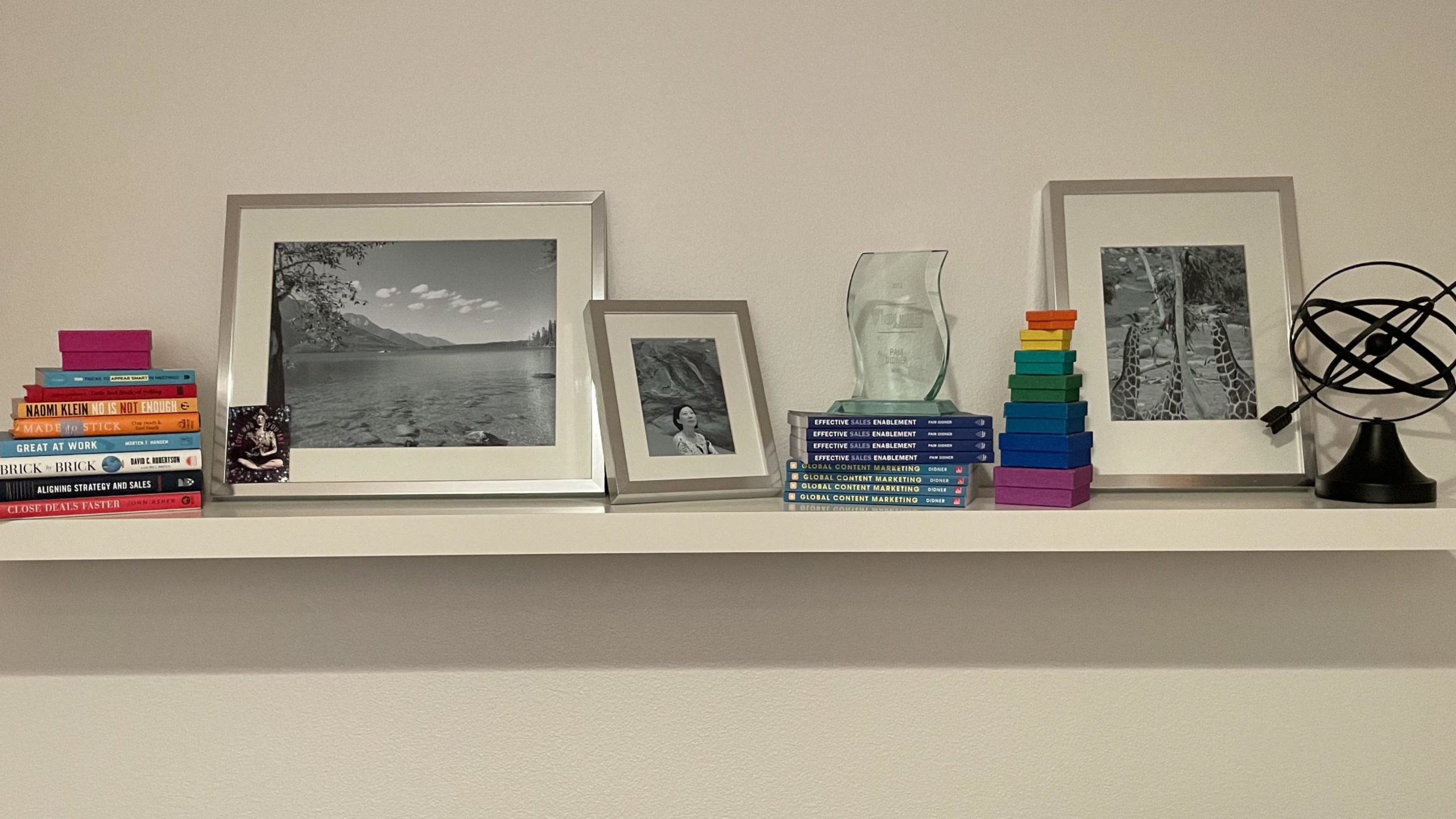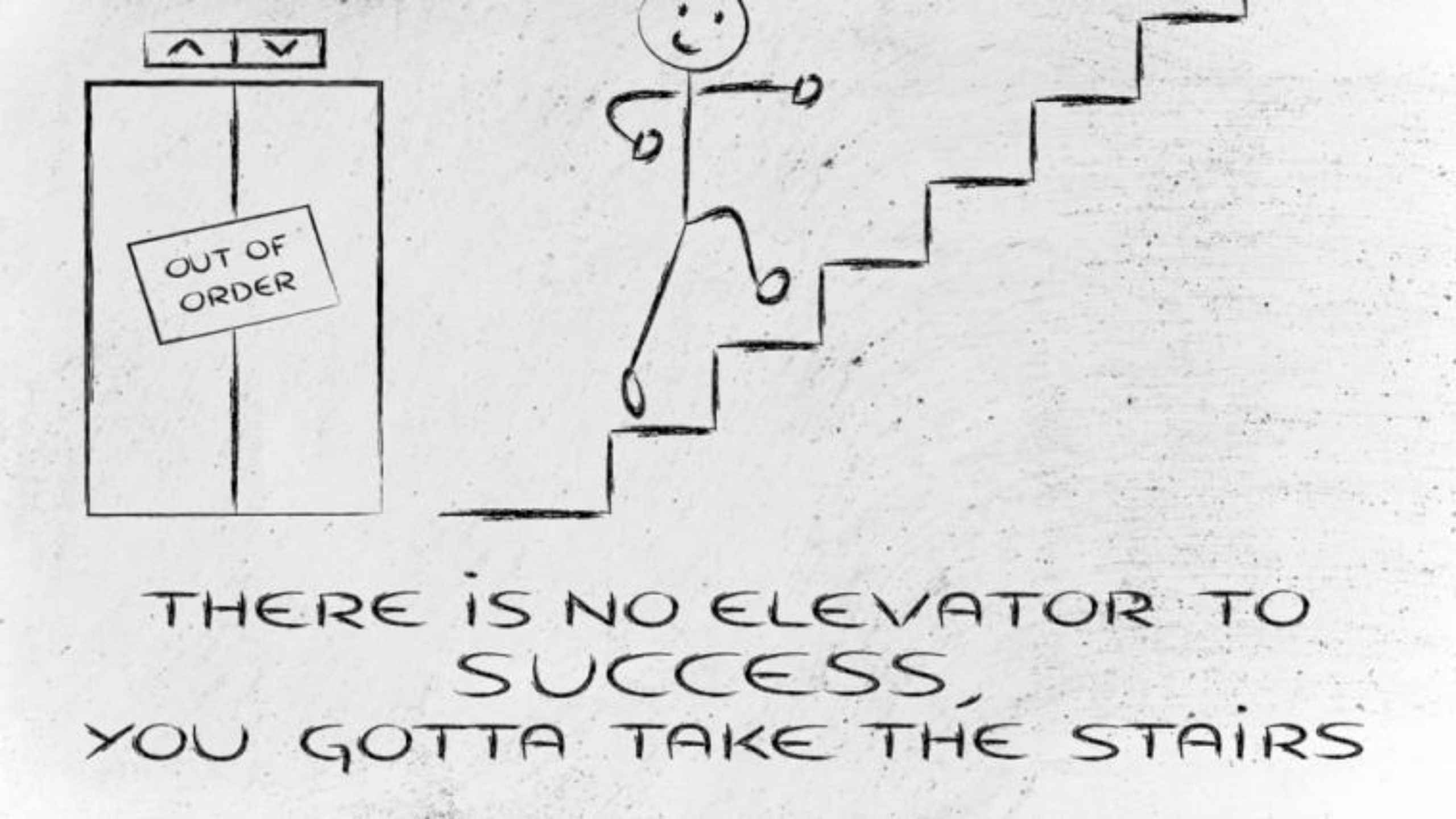
As a speaker and consultant, looking professional and sounding fantastic in a virtual meeting (working from home) is essential for me. This is especially important when I
present to prospects and existing clients or record a keynote presentation from my home office.
Here are some tips and tricks that I’ve learned in the past 9 months of trying different webcams, microphones, and retooling my own office:
- Mindset change: Virtual meetings are different from Face-to-Face (FTF) meetings
- Lighting
- Webcam
- Microphone
- Background
- Communication Style
Mindset change: Virtual meetings are different from Face-to-Face (FTF) meetings
I remind the sales professionals and marketers that I coach that there’s a mindset change from 3-dimensional to 2-dimensional.
When we do a presentation Face-to-Face, it’s 3-dimensional. We are physically i
n an office setting. We are aware of our surroundings and can see the audience’s facial expressions and gestures. We can easily adjust our tone, the presentation flow, and communications based on the audiences’ reactions in real-time.
In a virtual meeting, it’s not that easy. Many attendees won’t show their faces on your calls, so you don’t see their facial expressions. Unless they talk, you can’t tell if they embrace or disapprove of your ideas. Everything you see or hear is filtered via a computer screen. In essence, it’s a 2-dimensional reality.
In a 2-dimensional environment, the key is to focus on the space and items that you can control:
- Lighting
- Quality of sound
- Camera
- Background
- Yourself
What I have learned: focus on what people can see and hear within the frame that you share with them and present your best within that frame.
Lighting
Lighting is the most important element of virtual communication: You strive to present yourself not just professionally, but also in a positive and energetic way.
In a virtual setting, it’s not how you project yourself, and it’s how lighting projects you.
Lighting is something I struggled with when I started to set up my office for virtual meetings. Lighting can be influenced by the light coming from windows (natural lights change from early morning to night, from sunny to overcast), the lamp locations in a room, and the ceiling lights. You need to do a quick initial assessment of your room’s lighting: Is it too dark? Is it so bright that it whitewashes your face? How do you think you look with the current lighting?
There is fundamental 3-point lighting set up for video or filmmaking. The 3-point lights are the key-light (in front of you), the fill-light (on the side), and the hair-light (on the top). This video explains the setup of 3-point lighting.
Based on the 3-point lighting system, you’ll need to have lighting in front of you (or behind your laptop as the key light) or on the two sides of your desk (fill light). You don’t need to set up a 3-point system with complicated lighting structures.
My recommendation for the business professional, at a minimum, is to purchase 2-3 selfie ring lights. Preferably in 8, 10 or 12 inches depending on the size of the room and lighting needs within your room.
There are many selfie ring light options on Amazon. The vendors and selfie ring light options change regularly. The two selfie ring lights I purchased are no longer available on Amazon because vendors are constantly modifying the designs. Here is the link to a popular selfie ring light.
I’d recommend you buy 2-3 selfie ring lights. They are not expensive. Use the 2-3 ring lights to improve your lighting by placing them at different places within your room, such as behind your monitors, on your desks, or lengthen the tripods as stand-alone pieces and place them on the sides of your desk or chair. Move around, adjust the lights, and find out the best arrangement for you. If you think one or two ring lights are enough, you can just return the additional one.
Lighting adjustment is a trial-and-error exercise, especially if you have an older home with limited lighting.
What I have learned from my trial-and-error experience:
- Make sure people can see your face clearly.
- Not too bright or too dark
- You need to like what you see.
Webcam
In addition to lighting, another key element is a webcam. In general, many of us use the embedded cameras of our laptops to project ourselves. It works fine most of the time. However, some embedded cameras make you look blurry on screen. That’s where a dedicated webcam comes in to play.
Although my embedded camera works just fine with my selfie ring light, I still decided to purchase a nice webcam. The biggest reason is that I want to be able to adjust how much background is visible: the Field of View (FOV).
- 60-degrees FOV: captures one person sitting in front of a computer
- 78-degrees FOV: wide enough to capture two people facing a camera mounted on a computer monitor
- 90-degrees FOV: great for showing a whiteboard or a group of people seated at a conference room table
In general, you can’t adjust the FOV with the embedded camera on your laptop. However, you can do that with a separate webcam and its software. I am able to adjust the Logitech Brio webcam using Logitech Logi Capture software, so it shows either 60,78 or 90 degrees FOV.
There are many webcam options out there, but I prefer Logitech webcams. Logitech C930 and C310 are the most popular options. Logitech StreamCam and Brio are on the more expensive side. I especially like Brio’s 4K resolution. With proper lighting, you can look fantastic!
Here is the Tom’s Guide entry for webcams:
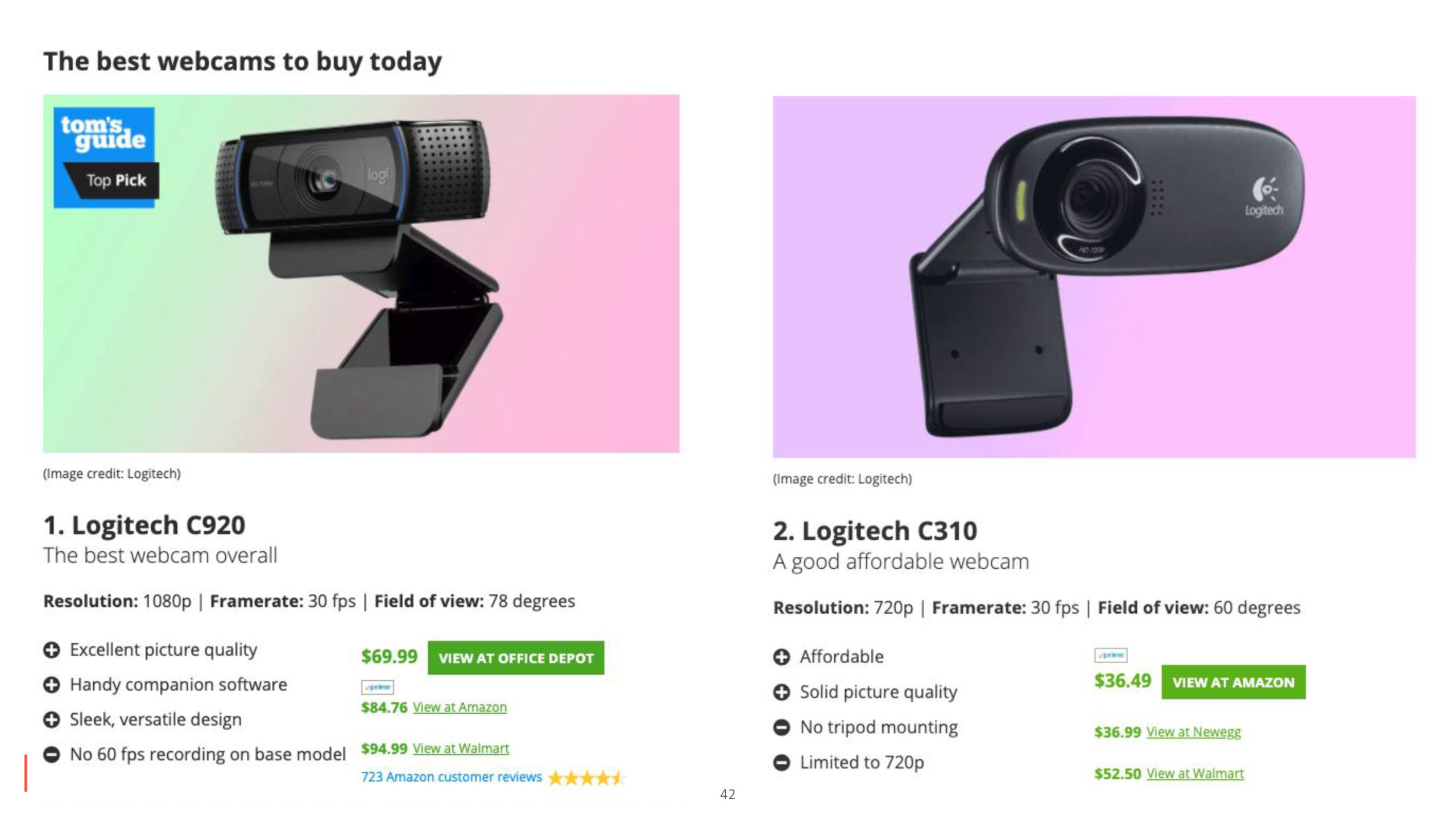
Microphone
The next thing you should consider is the quality of your sound. If you use Zoom or Teams, people can hear you well. However, if your dog barks in the background or someone mows the lawn, people can hear the background noise, which is not the most ideal when you present or lead the discussion.
It’s nice to have a microphone which can capture only your voice, but not the background noise. Cardioid mics are revered for their directionality and rejection of extraneous sounds.
To make it easy, I recommend the Blue Yeti mic with USB or Audio Technica AT2020 Cardioid Condenser USB mic.
Again, there are many mic options out there. Do your research and read reviews on YouTube. I ended up buying 3 mics of different brands to try: Rode, Audio Technica and Blue Yeti. I like all of them and use them on different occasions.
Background
Now that you’ve made yourself look great with your webcam, the lighting is good, and the sound is awesome, the next thing you can control is your background. Not everyone can set up their background with nice décor or gorgeous bookshelves. Sometimes, people can see your kitchen or bed in the background. You can opt to use a virtual background instead.
So, which one is better? Real background or virtual background? This is totally up to you, and it’s a personal preference.
Here is my actual background. It’s a simple shelf with some décor. That’s it. Nothing fancy. I like to use my real background to show who I am.
When I choose a virtual background, here are some options I usually use. As you can see the white background tends to pop a little more. Of course, if you use a white background, I’d suggest you wear a non-white shirt or blouse to differentiate yourself from the virtual background.
What I’ve learned: Background is a personal choice.
Communication Style
I only have four words for your communication style: BE YOURSELF and PRACTICE. We’ve all tried to be someone else or emulate someone’s style, and it’s the inevitable imposter syndrome. I’ve come to realize that it’s better just be me, but it doesn’t mean that I am perfect. I still need to prepare and practice before I present or pitch.
I’ve learned to be confident and comfortable with myself. Being confident comes from knowing the topics well. Being comfortable comes from years of work experience. If you are a seasoned professional and know your stuff, be confident, be comfortable and be yourself! #cando
Being confident doesn’t mean being cocky. You still need to know your audience; you still need to prepare your materials; you still need to prepare and practice before your virtual presentation.
What I’ve learned: there is no shortcut. Really, there isn’t.
In summary…
There you have it. Sound, webcam, lighting, background and your style are what you can control for your virtual meetings. Make the best out of it.
Oh, there is another element you can control, which is your presentation. Check out my blog post: How to Deliver a Virtual Presentation to Management Successfully. Find out how to prepare the opening, middle and ending of your presentation.
It’s time to take control of your virtual communications! Make it happen in 2021!
Keep learning about marketing, sales, and technologies. Read some of my previous blog posts which will help you grow; no matter how experienced you are.
How to Deliver a Virtual Presentation to Management Successfully
The Ultimate Sales Enablement Guide
25 Best B2B Marketing Conferences 2023

